#Structural Adhesive Tapes
Explore tagged Tumblr posts
Text
Unlocking the Potential: Exploring the Structural Adhesive Tapes Market
In the realm of modern construction and manufacturing, structural adhesive tapes have emerged as indispensable components, revolutionizing the way materials are joined and assembled. The structural adhesive tapes market is witnessing substantial growth, driven by their superior bonding strength, versatility, and cost-effectiveness compared to traditional joining methods like welding or mechanical fastening.
One of the primary drivers of the structural adhesive tapes market is their widespread application across various industries, including automotive, aerospace, electronics, construction, and healthcare. These tapes are adept at bonding diverse materials such as metals, plastics, composites, and glass, making them invaluable in a multitude of manufacturing processes.
In the automotive sector, structural adhesive tapes are increasingly used for lightweight vehicle assembly, providing improved fuel efficiency without compromising safety or structural integrity. Similarly, in the aerospace industry, these tapes offer significant weight savings while maintaining stringent performance requirements. Moreover, in the electronics industry, they facilitate miniaturization and enhance product durability.
The construction industry also relies heavily on structural adhesive tapes for bonding facade panels, cladding, insulation materials, and structural elements. Their ability to withstand extreme weather conditions, vibrations, and thermal expansion makes them an ideal choice for modern architectural designs.
Market trends indicate a growing demand for structural adhesive tapes with enhanced properties such as high temperature resistance, UV stability, and excellent adhesion to low-surface-energy substrates. Manufacturers are investing in research and development to meet these evolving needs and gain a competitive edge in the market.
Furthermore, sustainability concerns are driving the adoption of eco-friendly adhesive formulations derived from renewable resources, reducing environmental impact without compromising performance.
As the demand for lightweight, durable, and efficient bonding solutions continues to rise, the structural adhesive tapes market is poised for further expansion. However, challenges such as regulatory compliance, quality control, and pricing pressures remain significant considerations for industry players.
In conclusion, the structural adhesive tapes market represents a dynamic landscape with immense potential for growth and innovation. With advancements in materials science and manufacturing technologies, these tapes are reshaping the way we build, assemble, and create, driving progress across various sectors and contributing to a more sustainable future.
#Structural Adhesive Tapes#Adhesive Market#Industrial Adhesives#Construction Materials#Market Trends#technology
0 notes
Text
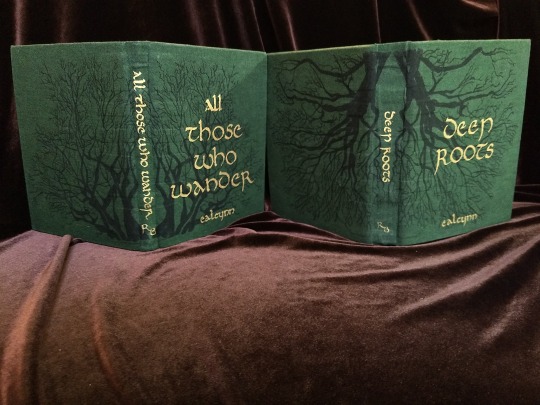


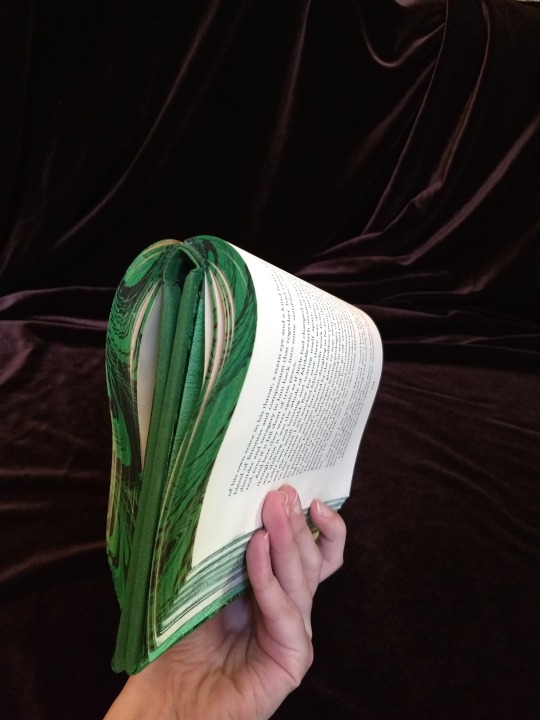

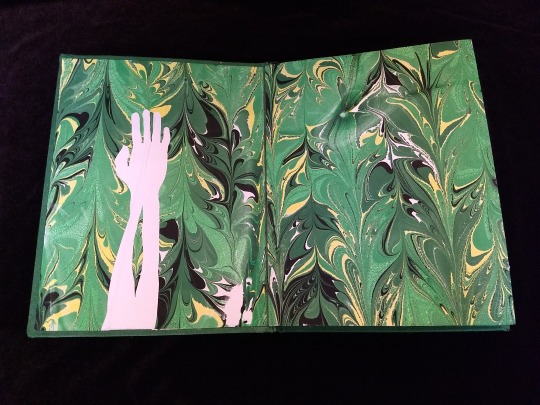
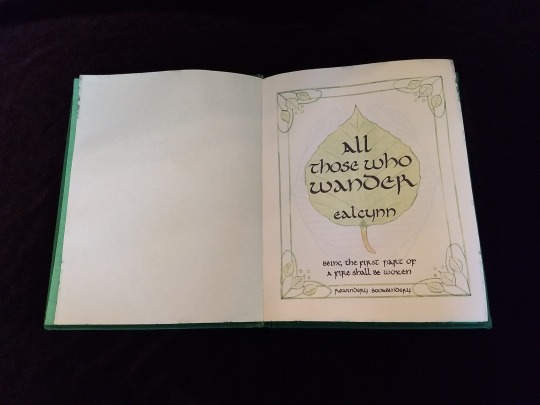
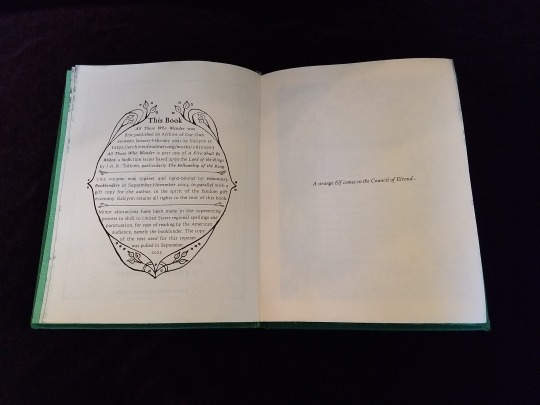



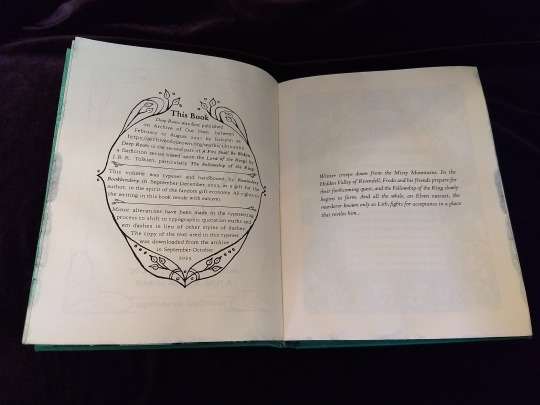
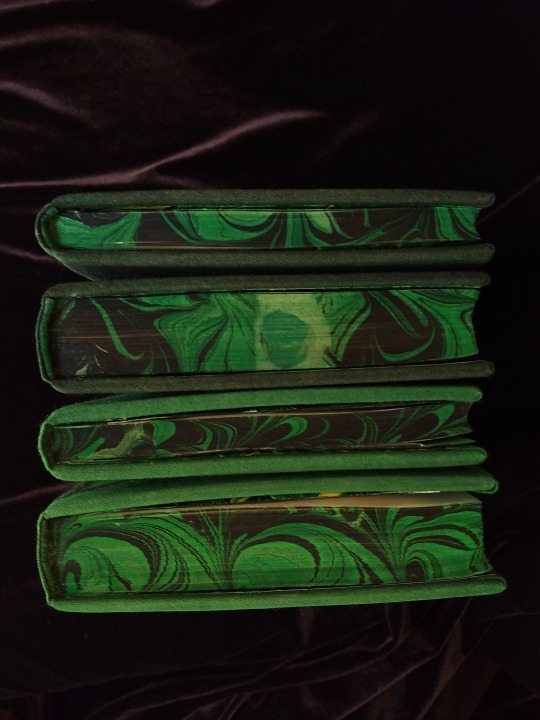


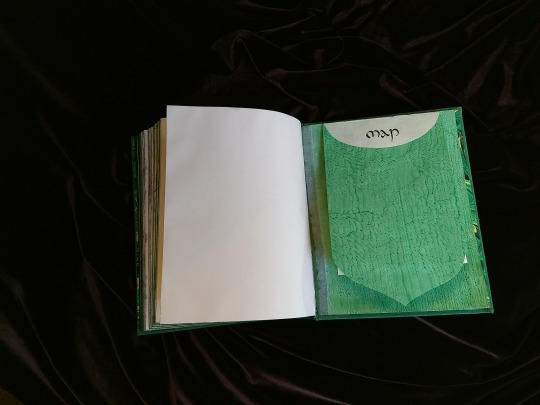

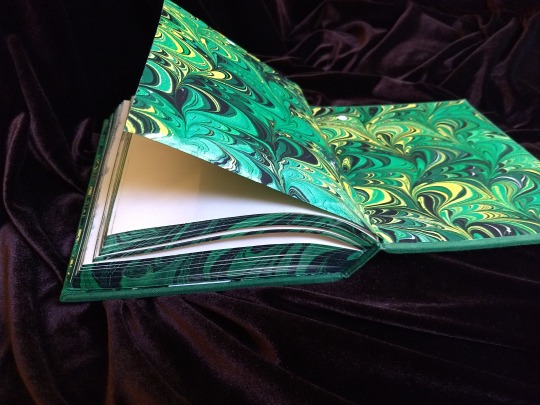

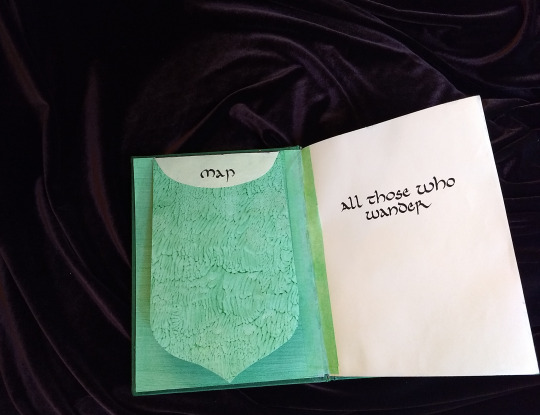

A Fire Shall Be Woken, by Ealcynn. A pair of bindings using the K118 structure, one as a gift for the author and one to keep.
Chapter page illustrations are by Alphonse Mucha, all other illustrations are hand-drawn.
I hope to make a long post later explaining the process in more depth & another to document all my mistakes, but here's the basics.
New techniques learned: Paper marbling, edge marbling, uncial calligraphy, making paste papers, drawing on bookcloth, making paste-filled cloth, fold-out maps
I began work on this project in early September and am completing the finishing touches this week.
Structures:
Binding: K118 tightback
Endpapers: Simple cloth-joined endpapers
Map fold: Turkish map fold
Materials:
Sewing supports: linen tapes
Thread: 30/3 linen thread
Spine lining: Medium weight kozo tissue bonded to linen fabric
Interior paper: Hammermill Ivory, 11x17, hand-cut to 8.5x11
Endpapers: Blick sulphite paper hand-marbled, with masked stenciled silhouettes created with freezer paper
Adhesives: Jade PVA, wheat starch paste, wheat flour paste
Covers: Davey board, laminated full thickness to half thickness
Cover fabric: Studio E shot cottons in Jungle and Emerald; filled with wheat starch paste
Cover decorations: Speedball india ink and Dr. Ph. Martin's calligraphy ink in Copperplate Gold
Inks for maps and illustrations: Speedball black india ink and a selection of watercolors thickened with gum arabic
Dip pens used for calligraphy: Combination of Brause calligraphy nibs and Leonardt tape nibs
Dip pens used for illustration: Nikko G pointed pen nib
Typesetting:
Typesetting program: Scribus 1.5.5
Body font: Coelacanth in 10 pt caption weight
Headings, titles, chapter titles, drop caps: Hand lettered uncial calligraphy, scanned
Illustrations and References:
Frames on colophon, copyright, author's notes and title page: Hand drawn, with inspiration taken from the vellucent bindings of Cedric Chivers
Frames that illustrate each chapter start: Alphonse Mucha from Cloches de Noël et de Pâques
Cover illustrations: Referenced from a photograph of an European beech tree found on iNaturalist.org
Maps of Imladris: Hand drafted with inspiration from the maps of Barbara Strachey, and Daniel Reeve
Map of Eriador: Traced from a map by Karen Wynn Fonstad, with edits made to coordinate with the geography of the fic
Frames on maps: Referenced from a drawing by Alphonse Mucha that @zhalfirin found for me
Special Thank Yous:
To the tightback council of problem-solvers in the Renegade server: Zhalfirin, Eka, @spockandawe who helped figure out many issues with the structure and technique
To the marbling experts in the Renegade server: Marissa, Aether, AGlance, Jenny, Catz, Badgertide, Rhi, and everyone else who helped me figure out beginnner marbling
To Spock for finding the K118 structure and introducing it to the server!
And to Bruce Levy, who discovered the method and shared his discoveries freely with the bookbinding and conservation world.
#bookbinding#Fanbinding#mine#bookbinding adventures#thank you to everyone i consider this a group effort#it has been 10000 years and I have loved every step#except for sanding. nasty nasty sanding. ew.#fic recs
242 notes
·
View notes
Text
Well-Meaning Interventions
Here are some frequently encountered DIY repairs that, while well-meaning, are, alas, misguided interventions that exacerbate damage and some alternative approaches that better promote ongoing usability.
While scotch tape is great for wrapping presents and many other tasks, when used on book pages and documents it typically creates problems. The adhesives in clear, pressure-sensitive adhesive tape tend to degrade and discolor over time, resulting in significant damage to the paper. A clear example of degraded tape damage is this 1862 letter from Confederate soldier M.A. Harvey to his wife, “My Dear Eva”.
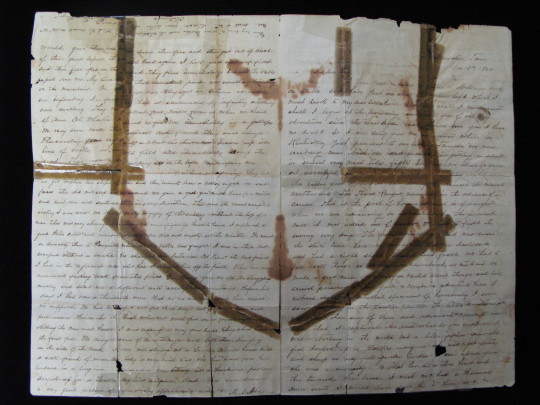
While this letter would have been relatively straightforward to mend with kozo paper and paste, the tape caused permanent damage, and days of work were required to stabilize the letter so that it could be mended appropriately.
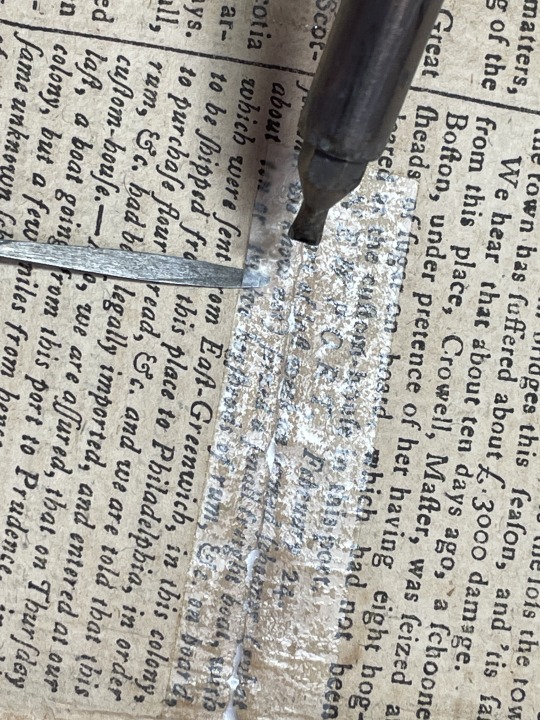
When the boards of a beloved volume become detached, simply applying duct tape to reattach them might seem like a swell solution.

Though duct tape can temporarily reattach book covers, it tends to create significant damage and shorten the book’s lifespan. Similarly, where the spine of a book has become loose or detached, at first glance it might seem that adhering a loose spine covering directly to its text block would be a simple fix.
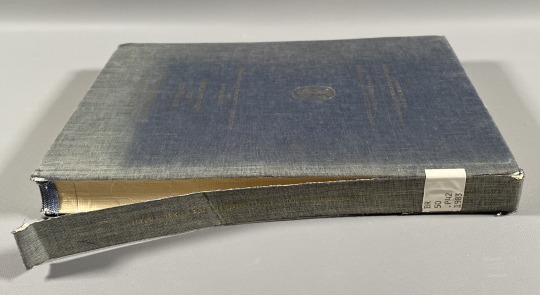
However, the spines of most modern books are not actually glued to the spine of the text by functional design. Adhering the spine covering directly alters the book’s mechanical structure and impedes its functioning, resulting in stress points that create further damage as the book is used.
In order to retain loose book covers or spines, consider tying the book with cotton twill tape, positioning the knot along the head, tail, or fore-edge of the book.

Even better, alkaline book boxes from a preservation supply vendor offer protection from further damage or loss while helping to moderate acidic degradation processes. The repair of books that one wishes to remain functional over time is best left to trained conservators or technicians. For further preservation resources, preservation supply vendors, and information on locating a conservator, see the Hesburgh Libraries Preserving Private Collections guide.
Applying leather dressings such as leather conditioner, neatsfoot oil, or shoe polish to leather books hampers their preservation. While one may enjoy the appearance of polished leather spines in a bookcase, in the short term, leather dressings may darken leather and over time tend to further dry out the skin as well as cause stickiness and/or significant discoloration to the leather, known as leather bloom.
If a leather-bound book is exhibiting signs of leather decay such as red rot (crumbling leather that creates a dusty mess that can transfer to the book pages during use), consider ordering an archival alkaline box for the book or consulting a conservator for further advice on preservation and treatment options.
Using books as a place to “preserve” newspaper clippings, flowers, etc.
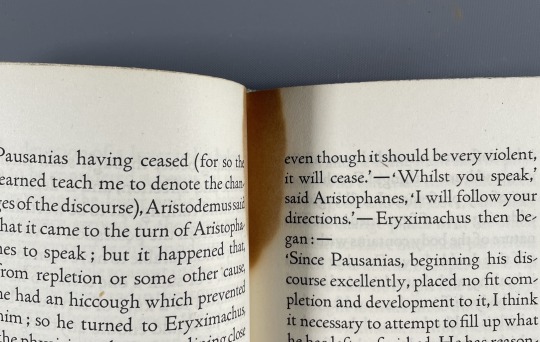
Placing newspaper clippings or other items inside the protective pages of a book might seem like an ideal place to keep the item flat and secure. However, most newspapers are printed on poor-quality paper that quickly becomes highly acidic, and over time this acid will migrate into the pages of the book, chemically degrading and visually staining them. A more effective place to store treasured clippings is within alkaline folders that offer both chemical and physical protection.
831 notes
·
View notes
Text


🎃Controller Grips Tape Compatible with GameSir G7 HE / G7 SE / G7🎃
🎃INNOVATIVE MATERIAL - TALONGAMES G7 HE / G7 SE / G7 Controller Grip Skin is optimized for the touchpoints of your fingers, offering a slip-resistant, multi-textured grip made from a comfortable polymer material.
🎇UNRIVALED QUALITY - Highly durable with an integrated molding structure, it ensures both performance and extended life, providing full protection for your controller and saving you money.
🎉EXCELLENT FEEL & PERFECT CUTTING - Featuring precise 3D scanning, it offers a perfectly fitted shape with maximum coverage and a comfortable 0.6mm thickness for improved grip.
🎊EASY TO APPLY - Pre-cut for simple application within 3 minutes, using the removable adhesive technology by 3M. The grip can be re-stuck or removed without residue, and is easy to clean and replace. A variety of options are available to meet user preferences.
32 notes
·
View notes
Text
DAY 5497
Jalsa, Mumbai Mar 5/6, 2023 Sun/Mon 12:31 AM
🪔 .. March 06 .. birthday of the “eelas of the ila” .. Ef Leela Sitahal from Toronto, Canada 🇨🇦 .. and Ef Sharmila Bhatt .. our affection and wishes ..
And the wishes also to Ef Muhammad Junaid from Canberra - Australia 🇦🇺 .. and Ef Muhammed Shifan from Kerala .. also birthdaying on March 6th .. love and wellbeing .. 🌿🙏🏻🚩
..
The cycle peddles away .. the rate of its speed varies .. the peddling legs tire .. the basket for the buying to be done hangs unobtrusively on the handle bar ahead .. the seat softened by the extra cushioning raised to accommodate the lengthy legs .. legs that disproportionately spring out from the normalcy of its origin .. and the race to be in the timed presence, by some manner of speed latching on to the faster vehicle that moves on the gasoline structure .. fool hardy but never to be tried .. in the heat and the cold of the winter , the cycle , cycled out into the streets of lanes reaching out to the education machine or the general grocery store to pick up those that have been ordered by the maadre , and to return before the lamps lit the road ..
On occasion to give it a wash .. clean up the mess gathered about .. oil the oiling parts .. repairing the punctured tyres from the nearest puncture person by the side of the kirana that sold all - from the chewing gum, to the divali fireworks to the idle gossip while the bubbles appeared on the tyre dipped in the water trough .. dried , cleaned applied the blocking rubber tape to close the leak with that wonder smelling adhesive and returning back with that sense of having conquered the entire Universe ..
Starting the process of learning with the cross legs under the guest bar in front of the seat .. the ‘kainchi’ the scissors, we would tease those not accomplished enough to ride it the way it is supposed to be ..
Ah those were the days ..
in remembrance of the old has its nostalgia in place .. the present of the yesterday, forgotten and lost .. some day the collect of the paper work the letters the medals and cups won in recognition of your athletic self and the proud moments on the victory stands at the number one step .. all lost and gone .. pity ..
But as they say nothing leaves this Earth .. it be there somewhere hidden among the vapours of time and universe ..
May there be some semblance of curiosity and some confidentiality when ever this revelation occurs ...
My love and care ..

Amitabh Bachchan
145 notes
·
View notes
Text
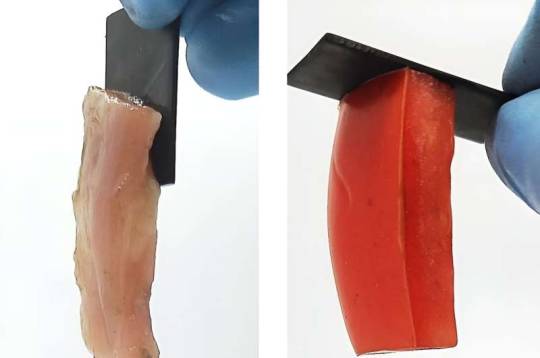
You don't need glue to hold these materials together—just electricity
Is there a way to stick hard and soft materials together without any tape, glue or epoxy? A new study published in ACS Central Science shows that applying a small voltage to certain objects forms chemical bonds that securely link the objects together. Reversing the direction of electron flow easily separates the two materials. This electroadhesion effect could help create biohybrid robots, improve biomedical implants and enable new battery technologies. When an adhesive is used to attach two things, it binds the surfaces either through mechanical or electrostatic forces. But sometimes those attractions or bonds are difficult, if not impossible, to undo. As an alternative, reversible adhesion methods are being explored, including electroadhesion (EA). Though the term is used to describe a few different phenomena, one definition involves running an electric current through two materials causing them to stick together, thanks to attractions or chemical bonds. Previously, Srinivasa Raghavan and colleagues demonstrated that EA can hold soft, oppositely charged materials together, and even be used to build simple structures. This time, they wanted to see if EA could reversibly bind a hard material, such as graphite, to a soft material, such as animal tissue.
Read more.
12 notes
·
View notes
Text
All right listen up therians, specifically dragonkin and those with similar tails- I'm showing you mine, and how to make one like it.
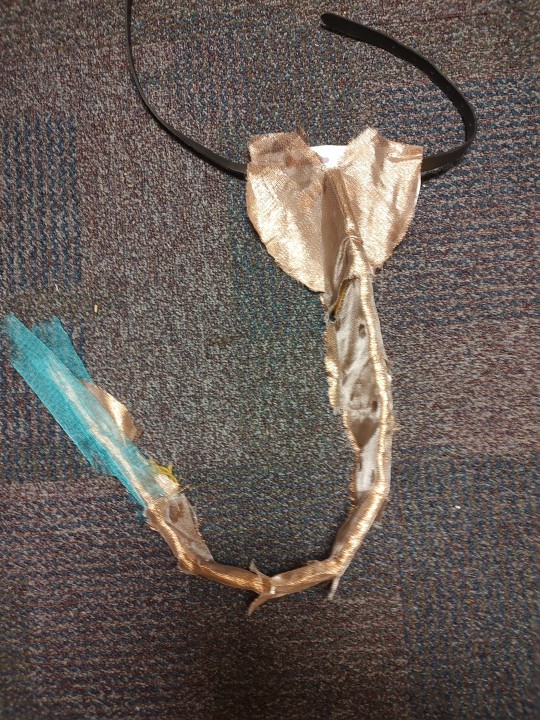
So this is an articulated tail, it moves on its own but still holds its structure and doesn't sag and get tangled in my legs despite its length. It makes noise when it moves, but there's probably ways to fix that.
So to start, draw the silhouette of your tail in its resting position on a piece of stiff fabric, then cut it out. The color does not matter as you'll be covering this piece up entirely. The important thing is that this fabric is not elastic at all, otherwise your tail will be very saggy.
Next, mark lines where you want the joints to be. I tried to keep mine mostly vertical so the tail didn't hang in unexpected ways and drag on the floor, but you can do whatever fits your tail motion the best. Then, use some stiff and bulky material to cut out the individual panels that you've drawn twice. I used cardboard, but you can probably use foam blocks if you want more volume. It helps to trace the shape from step one onto your material, then cut the resulting shape into panels to get the final pieces. Make sure you keep track of which pieces are which.
Next, use some kind of glue or adhesive to attach the panels to your base fabric. Depending on how thick your panels are, you may need to remove some of the material around the joints to allow them to move freely. This is the basic structure of your tail.

Once you have your structure, cut out fabric pieces to create your scales. You'll want to cut out individual pieces for each panel, otherwise you might restrict the tail's movement. I cut my pieces on a fold and folded them over the top of the tail to make the top smooth, since it's the bit most people are going to see. Also, it's a good idea to make each cover piece slightly longer than its corresponding panel so that you can overlap the pieces to hide the joints. You can attach these pieces with adhesive or sewing, whatever works best for you.

To make the base of the tail, just cut out a cardboard piece that can fit your whole tail base on it, and cut slits in it for a belt as seen above. Before covering up the top section of your tail, use glue to attach the edge of your tail to the base plate. Depending on what kind of cardboard you're using, you may want to scratch up the surface a bit first. Then (preferably before the glue dries) use masking or duct tape to strengthen this connection. This part should be completely stable rather than flexible, though a little bit of give is okay. Once you're satisfied with the connection, cover up the base section and base plate with your decorating fabric.
Sorry about the vagueness around materials, techniques, and such. It's kinda reflective of the way I approach crafting as a whole, and I literally used the stuff I had on hand at the time (hot glue, cardboard, leftover fabric scraps from my wings) to make this tail.
The design was inspired by this YouTube video btw:
youtube
Anyway, hope this helps someone! I know, right, an actual post instead of incoherent ramblings about the inside of my brain, but sometimes my impulsive posting gives me the impulse to do something actually useful for once.
12 notes
·
View notes
Text
Brutus aw13 (pt.1)
Beautiful Demolition
Saint Laurent by Hedi Slimane Smoking Jacket
When wearing a Saint Laurent jacket, you should not button the front. Because that is Hedi Slimane's style. The smoking jacket, which turned heads in the 2013 Spring/Summer collection, has become the brand's icon. Wanting to discover the secret of its beauty, Brutus decided to dismantle the entire jacket. This gave us a glimpse of the meeting between the techniques of a historic couture brand and couture creations as sharp as a sword.

This is an "open jacket" made by Saint Laurent for training. The sleeves and outer fabric parts have been removed so that the rough structure can be seen. Of particular note are the shoulder pads, which are three times the size of normal ones. These shoulders create a square, skinny, vertical silhouette. This piques your curiosity.

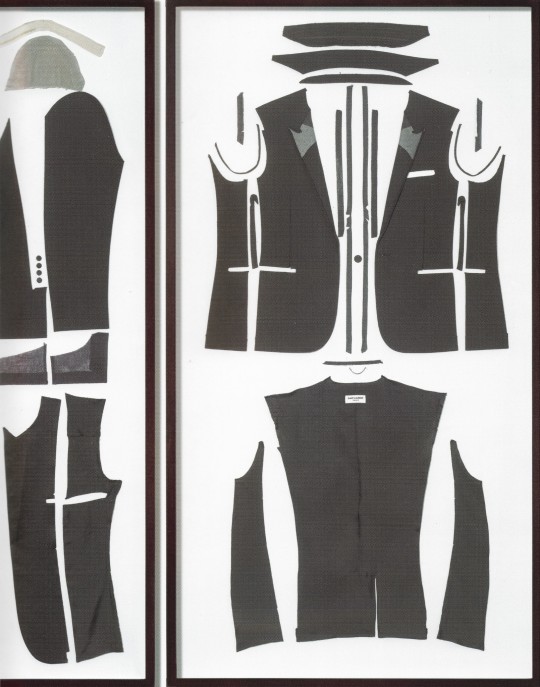
During the dismantling, we read: Respect for tradition and attention to detail.
A beautiful jacket that will leave you in awe
How many parts does it have? How can it be tailored to justify its top-notch price? My curiosity was piqued, and I felt the urge to dismantle it. This was a "virtuous dismantling" process that was officially approved by the designer.
The person who cooperated in the dismantling was Mr. Nishioka, an authority in the Japanese modeling world who has created formal patterns and served as technical instructor for acclaimed fashion houses both in Japan and overseas. Before dismantling the Saint Laurent smoking jacket, he analyzed it as follows:
"First of all, it's slimmer than a regular tuxedo. It has an extremely tight body line, a narrow width, and a sturdy padding. The fit is very distinctive. As for the pockets, one side is a vertical slash pocket. This is an idea for women's clothing that would never be thought of in men's tailored clothing."
According to the documents, Monsieur Yves Saint Laurent first introduced smoking jackets for women in haute couture in 1966. Since then, smoking has been passed down to the present day as a costume for both men and women for the brand. This idea has been inherited by the new Saint Laurent created by Hedi Slimane. This first step was a return to the brand's origins, and at the same time, it must have been an homage to Monsieur.
We controlled our excitement and decided to have them begin the dismantling work immediately.
The first thing that surprised me was the use of pads (see photo). "Normal tuxedos are about centimeters thick, but these shoulder pads are about 3 centimeters thick. They're quite thick. This creates a beautiful square silhouette."
The back of the jacket, which I have never seen before, has a secret. "The average back length is about one centimeter. But this one has two centimeters. Since it is so thin to begin with, I think they may have left some extra room in case it needs to be altered."
What impressed me even more was the careful workmanship. The anti-stretch tape (photo) applied to the base of the armhole to stabilize the shape is not simplified with an adhesive, but is hand-made.
It used a fastening system that did not require any checks.
After more than nine hours of dismantling, the work was nearing completion. Finally, all that was left was the interlining, which holds the jacket in place. The interlining is a layer of fabric between the outer and lining. It plays a vital role in preventing sagging and stretching, and stabilizing the shape.
"Many designers use a pressure-bonded interlining called fusible interlining. But this requires the most time-consuming and expensive material: hair. The material is high-quality horsetail hair, so there's no room for error."
A rare star designer reconstructs the traditional jacket created by the great couturier. The whole view has been revealed. This was the Kannon page. Please take a look at this beautiful disassembly show!


Beautiful Demolition
The beauty of Saint Laurent jackets is because it depicts fashion using couture techniques.
The 104 parts are arranged like beautiful insect specimens, and each one is symmetrical, making it look like a piece of art.
The central panel is the outer fabric of the "front body" and "side body", and the lining of the "back body". The panels on either side of the center are the outer fabric of the "sleeves" and "back body", the "label body" and the lining of the "sleeves". And the iconic "shoulder pads".
Both outer panels/various "pocket" parts and most importantly the "interlining".

Smoking Jacket
Saint Laurent by Hedi Slimane 299,250 yen
3 notes
·
View notes
Text
Rook notes, part 3
Deep in Act 2. Bear in mind I have not finished the game yet, so some of these opinions may be revised by future events. No plot spoilers here, but some general tone and structure observations.
-For those who might think I’m playing too nice with Veilguard, here is a criticism: I rather wish all the personal quests had not been stuffed into Act 2. Putting on my filmmaker hat for a second, I have visceral memories of wrestling with structural issues in timing and the delivery of information. It really feels to me as if the team was not given enough time or agency to fold in the personal quests in a seamless way, and the “team in disarray; needs therapy” was a bit of scotch tape to join the personal quests with the main arc.
You want team development—you want people to have arcs. But even DA:2, which had an ungodly dev timeline, was able to flow Fenris’s story—or Isabela’s, that’s an even better example—into the unfolding of events. I have compassion for the devs. I myself have applied the adhesive tape. I know what it means. It’s not a game-breaker for me, and I’m sure the devs themselves wish they had been in position to do this in a less heavy-handed way.
-I have played the Kindest Rook Imaginable, and was richly rewarded by getting called a sap by Neve. While I love this guy and will never forget him, I look forward to making a plethora of Rooks. Like wine and food pairings, I want to create a Rook that will bring out the nuance in each character.
-Davrin and Assan give me Star Wars vibes. Even the color choices of Dav's clothes somehow remind me of Star Wars. This is not necessarily a bad thing. Original Star Wars Vibes are very special. They’ve been emulated so much at this point that it’s not always easy for me to remember that.
-It’s true that Emmerich is operating in a very Disney system of tropes. That said, people seem to be forgetting that Bioware, given the opportunity, likes to foil player expectations. From that standpoint, Emmerich is a subversive choice. Back in The Day, Grimdark was itself a subversion of the hero format, but by now it’s become de rigeur to be horrible and ghastly and soulless. I can easily imagine the Bioware devs subverting Grimdark tropes and expectations quite gleefully.
-I do not mind revisiting maps to do side quests. I like getting to know places. These are places in the world, not just places to fight things and loot stuff. But I am the person who likes to eschew the fast travel options whenever possible. The fact that I am starting to know my way around Dock Town is a plus, not a minus, in my book. It means the game is working for me.
-I have heard a few pieces that upgraded my initial impression of the score, but I can’t shake the feeling that for Zimmer, this was just another job: “Background music for fighting. Got it.” Trevor Morris, you are deeply missed.
-People are really malding about not being able to be evil. I would like to agree with other observers who have pointed out that Rook is structurally quite different than the HOF, Hawke, or the Inky. The Hero of Ferelden was a Grey Warden. Wardens were sometimes murderers, yo. This is a faction as grey as its name. Hawke could make some foul choices, but Hawke’s becoming Champion of Kirkwall was more or less the tumbling-out of fate. They could be a perfect asshole and would still be Champion, because of fate. Inky’s situation is similar. In fact, the idea that Inky could become a tyrant was teased early in DA:I but that game never really delivered on that promise. All three of these protagonists fell into their role as center of the narrative universe.
Rook’s different. Rook was recruited by Varric. You may wish, Grimdarkly, that Varric was the kind of guy who would recruit an asshole because he (of course it’s a he) gets the job done. But Varric has a character of his own, evident in his own conduct and decisions across DA:2 and DA:I.
The moral universe of Veilguard is shaped by Varric’s choices.
There’s a lot more to say, specifically about Rook being a therapist-hero and a very potent foil for Solas. But I have a sinus infection right now and putting that together will require brainage I do not currently possess.
Rook out; back soon.
5 notes
·
View notes
Photo


Mostly unattractive, dirty, coked-out house is for sale in outrageously priced Los Angeles, California for $1.2M. Has 3bds. & 2ba., built in 1940.


Admittedly, the living/dining isn’t bad- nice wood and brick fireplace wall.


This structure looks like a bar. I think that skinny closet door is the entrance to the bar.


Over $1M for a small kitchen with an old corner booth and a 70s Harvest Gold stove.

Bath with a rusty bare sink pipe and nothing nice.


Here’s a bd. w/a very dirty carpet.

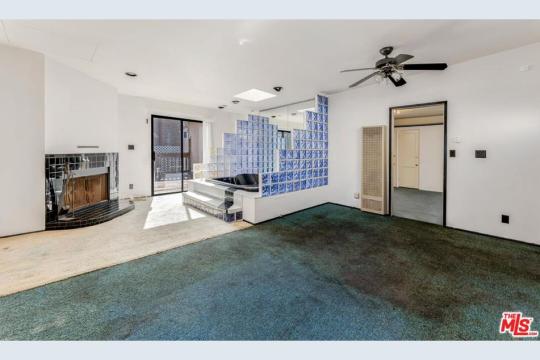
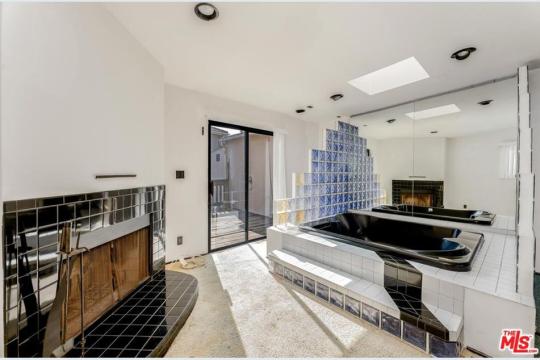
Another outdoor entrance door opens to the main bd. with a tub that has stairs and blue glass block. There’s also a tile fireplace and sliding doors to the deck. The rug is disgusting.


I don’t know what’s on these walls, but it looks like some old tape or adhesive. Otherwise, it’s not a bad room.
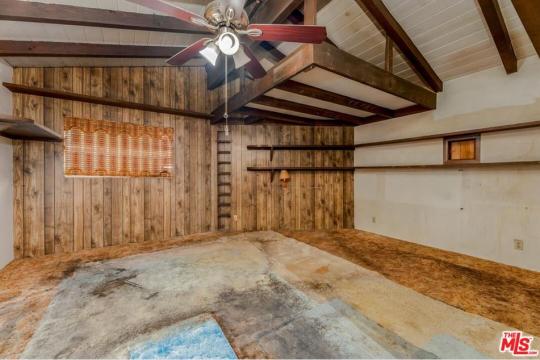

Looks like some kind of bd. with a lofted bd. The carpet is insane.

Plain bath.

Here’s a deck, but I don’t see any grass or garden, and it looks like there’s an industrial building next door. In NJ, I think you need a minimum 80′ x 100′ lot for a house- this house is on a small 61′ x 79′ lot.

Just a small cement area could be fixed up to make a little patio. I you have $1.2M to buy this home, you better have another $1M to fix it up. Terrible real estate market in LA.
https://www.coldwellbankerhomes.com/ca/los-angeles/10718-queensland-st/pid_50853706/
57 notes
·
View notes
Text
Exploring the Growth Potential of the Construction Adhesive Tapes Industry: Key Trends and Innovations Driving the Market
The construction adhesive tapes industry has been gaining significant momentum in recent years, becoming an essential component in modern construction projects. From residential buildings to large-scale infrastructure, adhesive tapes are revolutionizing how structures are assembled, sealed, and protected. In this blog, we’ll explore the factors driving the industry's growth, the latest innovations, and the benefits that construction adhesive tapes offer over traditional bonding methods.
1. Market Growth and Demand Drivers
The global construction adhesive tapes market is expanding rapidly, driven by rising demand for more efficient, cost-effective, and sustainable construction materials. Factors contributing to the market's growth include:
Increased construction activities in developing regions
A growing emphasis on sustainable and green building practices
The need for faster, labor-saving solutions on construction sites
Technological advancements in adhesive formulation, ensuring stronger and more durable bonds
2. Types of Construction Adhesive Tapes
Adhesive tapes in the construction industry come in a variety of forms, each designed for specific applications. Some of the most popular types include:
Duct tapes: Known for their versatility and strength in temporary bonding.
Double-sided tapes: Ideal for permanent bonding in installations like flooring or wall paneling.
Foil tapes: Used in HVAC applications, offering excellent resistance to temperature and moisture.
Masking tapes: Perfect for precise painting and surface protection.
Each type serves a critical function, whether it's sealing, joining, or protecting surfaces.
Download PDF Brochure: https://www.marketsandmarkets.com/pdfdownloadNew.asp?id=222451392
3. Key Innovations in the Industry
Recent developments in the construction adhesive tapes industry have focused on improving adhesion strength, environmental resistance, and ease of application. Some innovations include:
Heat-resistant and waterproof tapes for extreme conditions
Low-VOC (volatile organic compound) adhesives that contribute to healthier building environments
Eco-friendly options using recyclable materials and biodegradable adhesives
Smart tapes that change color to indicate correct application or curing
These advancements ensure that adhesive tapes not only perform better but also contribute to more sustainable building practices.
4. Benefits Over Traditional Bonding Methods
Compared to conventional fastening systems like nails, screws, or liquid adhesives, construction adhesive tapes offer several advantages:
Quick application: Tapes require minimal equipment and can be applied faster than traditional methods.
Clean worksite: Adhesive tapes eliminate the need for liquid adhesives, reducing mess and cleanup time.
Strong and flexible bonding: Tapes provide long-lasting bonds that can withstand the stresses of construction environments.
Minimal damage to materials: Tapes cause less structural damage compared to drilling or nailing into surfaces.
These benefits are making adhesive tapes the go-to choice for many contractors and builders.

5. Future Outlook for the Industry
As construction projects continue to evolve with advancements in building materials and methods, the construction adhesive tapes industry is poised for continued growth. Innovations like smart adhesives, sustainable materials, and more specialized tapes tailored for unique construction needs will play a vital role in the industry's future. Moreover, as green building regulations become stricter, the demand for eco-friendly adhesive solutions will continue to rise.
#construction additives tapes industry#construction additives tapes#construction additives tapes market#construction#construction additives#construction additives industry#construction industry#business#news
2 notes
·
View notes
Note
I just saw that ask where someone says that wants a flat chest but don't want to use a binder for recent things said about it. What things??? Binders are harmful??
I think what they meant was that they've heard some things said about GC2B specifically (as of late, there were some reports of structural issues that concern some people). Binders aren't inherently harmful. There are harmful ways to bind, but that doesn't mean that binding is inherently harmful.
What is harmful to do while binding:
Binding too long for your body
Binding with binders that are too small
Binding with materials which aren't body-safe (e.g. duct tape, materials that are restrictive or too tight)
Sleeping in a binder or doing extrenuous activities like lifting weights
Using binders from places you aren't sure are safe (e.g. Amazon binders)
Binding while ill or unable to breathe
Binding can carry some risk to it, and you combat that by being informed about your body, needs, and what safety looks like for you. There are unsafe ways to bind with any method - for instance, it may be unsafe to bind with tape if you are allergic to adhesives, but on the flipside, there are safe ways to bind with any method.
Some binder companies are more reputable than others, and honestly? That's just the reality for pretty much everything else you would purchase. When you're looking into a binder or company, make sure to do research. Looking into independent reviews, for example, can be a great start.
If you're concerned about GC2B specifically, that's fine. If you don't think binding with that specific company would be safe for your body, try looking into other companies. I've heard multiple people say good things about For Them, Spectrum Outfitters, and Underworks makes binders specifically for binding. Those can be good places to start can get an idea of what you're looking for if you are unsure.
#ask#anon#trans#transgender#lgbt#lgbtq#ftm#nonbinary#the lesson is that there are some risks if you aren't fully informed of how your body needs to bind#but that that doesn't mean that binding is inherently more harmful than other things we do every day#i haven't tried every binding company so i can't speak to the varsity of the reviews but they could be good places to start
31 notes
·
View notes
Text
Watching me doing field recording
(This "autoethnographic" fieldnote alone takes 2 hours to complete... I spare myself from grammar editing and hope you could spare me of any mistakes too)
The recorder distributed by AK the instructor of the field-recording workshop was the same model as I bought about two months ago from the local music instrument shop, a very light-weight, handheld equipment costing a few hundred Hong Kong dollars. AK supplemented the rest of the set: a white wired 3.5mm in-ear earphone, a wind shield, and two alkaline batteries. This is my first time doing recording with a plug-in earphone on the recorder. With the inbuilt pre-amp that amplifies the sound from surrounding to your liking, my sense of listening was suddenly enhanced. In the room while AK was talking I started to test around, positioning the recorder down the table (as if I was eavesdropping). AK’s talking sound turned muffy-stuffy under the table. Patrick who sits next to me friendly knocked the table, it makes a hollow and nice sound in the earphone.

We were then sent out for 40 minutes with the new device to play around and get familiar with it. Changing lift on the 11th floor there is sharp and adhesive sound of peeling duct tape from the roll. It stands out in the very quiet, almost deadly dormant background. Associating with the female figure I saw, “it might be the helpers packing their belongings to be sent back to Philipines”, I think to myself. These aged industrial buildings can feel spooky without the busy cranky sound people makes. The aisles were very wide for trolleys to pass. But the walls in this one were painted bright colors - red on the ground floor and bright yellow on the 11th - with oversized sans serif characters indicating room numbers. Is it comic sans?

I turned on the "fluffy head" (the windshield on recorder looks cutely crazy) while taking the lift down the massive and old industrial building. Right away a rhythmic sound in the lift caught my attention. “If this is in the mystery sound no one would recognize it”, I thought. In this blank, empty in-between time, waiting to be transferred from one space to another, there was something working in the background, enabling the movement of the lift. My movement is not taken for granted, it is worked out by certain mechanisms, and such mechanisms leave a sonic trace. There was also the sound of different parts of a metal chain touching each other behind the steel sheet that boxes us in the lift. The fan made a low-pitched monotonous vibrating sound. Moving the fluffy head closer I hear it closer to me.
Down at the street level the nuances suddenly disappeared. The sound of the cars and buses suddenly swirled and overwhelmed everything else. My head didn’t spin. It numbed and suffocated. Sound Degradation like what Bernie Krause said, is this mesh of undistinguishable business. From afar in the country parks it turns to a low, roaming background noise, not unlike the electric white noise that persists every clip of recording. Isn’t it like the evasive plants that just expand at all cost, covering and killing everything under it? Our brain filters it out for our survival and it was quite successful. But how about the birds, the anthropomorphised, exhausted asian koel making a hoarse sound in late spring still desperately searching for a mate?
I looked at the map and decided to make my way to the ferry. At least there would be less traffic, maybe some trees and birds, ferry infrastructure will also be interesting (I’m interested in water related structures anyway). Crossing the road I heard the iconic sound of Hong Kong traffic lights. Exotic and exciting it may sound for tourists and new comers, I was however slightly annoyed by it - such an overly-dominant attention attractor! Passing by the green@community temporary recycle station, I wondered whether sound made by the act of dumping waste would be interesting. Then I heard birds remotely but surely. The high-pitch pierced through the background noise and made a pure, rounded and oppulent debut. If my attention was a clock, that chirping sound suddenly took the area between the hour and minute hands of 11:05. It was uplifting, undisturbed by the gloomy ground beneath it. With the sound in my earphone on, I kept walking, trying to get closer to the bird. But the sound in two earplugs can hardly be distinguished. I found it was easier to find the source direction with the earplugs off, using my carnal ears instead. Is this because of the background noise? Or there is something that is yet to be captured by the technology?
Tracing the birds I found myself standing next to a cotton tree (Bombax ceiba). In a rare 30C degree sunny day in late March, the bright red flowers contrast its bleaching white bark and the blue sky. Cotton trees flowers before leaves sprout, therefore this single tree looked less dense than the rest (mostly different kinds of banyan trees) and created a hole where what happens on the branches were more exposed. I clicked “record”, decided to waiting for the chirping to maybe appear, disappear, and change in volume. AK suggested us to make longer recordings. The minimum requirement for soundmap uploading is one minute, and he himself often makes recording 45 min or longer. That means staying in one place for as long as the recording goes and possibly doing nothing other than paying attention.
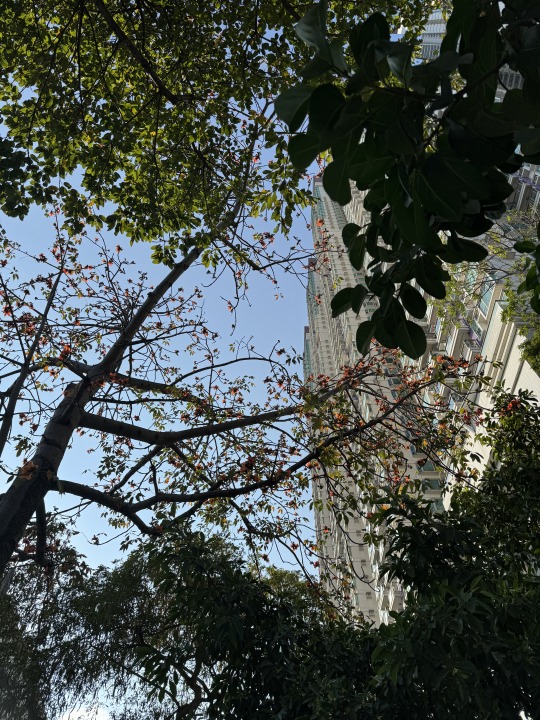
The chirping is distinct, sometimes chimed in by some lower “goo goo” sound. Then I spotted spotted doves (Streptopelia chinensis) on the taller branches. The minimum Flowers plump to the ground intermittently, making a heavy thud (do I hear the thud, or do I know because I’ve hold the heavy flower in my hand?). Other times dried flower or leave drop too, but I cannot hear a sound.
Through the leafless branches and flowers I saw a bird perching on a branch. The colour was unclear, but its crest instantly revealed its identity of a red-whiskered bul-bul (Pycnonotus jocosus). “Of course”, I thought to myself and suddenly the oppulent and delight chirping sound makes sense. This little thing was not making an mating effort, I think. It had something in its mouth, maybe food, maybe a small fibre for making nests, maybe something else but beyond what human being could understand about bird’s life. It was taking its time under the sunshine, twisting its head in small angles, as paying attention to something. Maybe it was also listening, paying attention. Is it still interested in those sounds - cars and busses and airplanes and dialogues - which are not part of their language systems? Can its brain also screen off the grumbling roaming noises that is below their feet? Maybe the ground under ourselves also makes a background noise, but we will only be able to distinguish it in the playback once we are shipped to another space with a different noise.
The recording was still going. I have the image of a casette tape recorder, when the rolling of the two white circles are visible when recording is going, rolling the thin roll of tape inside of the machine. Me looking at the bird, for a while. This attention forms a relationality, all rolled and compressed in the tape. Conserved and archived as a memory. Life is the finite resource of time, and paying attention to this bul-bul was committing one minute and ten seconds of my time, because this act of recording takes time and constant attention. And the bird, as well as myself who was watching/recording the bird, will be brought back to a renewed life in playbacks, creating new ripples. You never know what will happen when you press “record”, and when the sound is played back, everything already happened. I am fascinated by this playful misplace and the mystery of destiny.

(sorry, the bird is not in the picture)
(sorry, this post is not accompanied with a recording, as the recorder was collected by the organizer by the end of the workshop)
2 notes
·
View notes
Text
Drywall, also known as gypsum board or plasterboard, is a fundamental element in interior construction. Over time, it can be subject to damage from various sources like accidental impacts, holes from nails or screws, moisture, or settling. Learning effective patching and repair techniques is essential for maintaining walls' aesthetics and structural integrity.
Flow Drywall : Importance of Drywall Repairs
Structural Integrity Properly repaired drywall ensures the structural stability of walls and ceilings, preventing further damage and maintaining their strength.
Aesthetic Restoration Repairing holes, cracks, or blemishes restores the visual appeal of walls, creating a seamless and polished finish.
Property Value Well-maintained walls contribute to the overall value and marketability of a property, making timely repairs essential for homeowners and property managers.
Types of Drywall Damage Small Holes and Dents Commonly caused by nails, screws, or accidental impacts, small holes and dents can be easily patched and smoothed out.
Large Holes and Punctures Larger holes resulting from doorknob impacts, furniture, or more significant damage require more intricate repair methods.
Cracks and Water Damage Cracks can form due to settling, temperature fluctuations, or moisture issues. Water damage can cause swelling, bubbling, or staining, requiring thorough repair and sometimes mold remediation.
Tools and Materials Required Patching Compound Patching compound, available in various forms such as spackling or joint compound, is used to fill holes and cracks. Lightweight compounds are ideal for smaller repairs.
Drywall Patch Kits Patch kits contain self-adhesive mesh or patches designed to cover larger holes, providing a stable base for applying compound.
Drywall Tape For reinforcing seams and preventing cracks, paper or fiberglass mesh tape is used with joint compound.
Sandpaper and Sanding Blocks Used for smoothing the patched areas and achieving a flush finish.
Putty Knife and Drywall Trowel Essential tools for applying patching compounds and spreading them evenly.
Primer and Paint To finish the repair, primer helps the patched area blend with the surrounding wall, and paint provides a uniform appearance.
Steps for Drywall Patching and Repairs Small Hole and Dent Repairs Preparation: Clean the damaged area, removing loose debris or chipped edges. Ensure the surface is dry and free from dust.
Application of Patching Compound: Using a putty knife, fill the hole or dent with patching compound. Feather the edges to blend with the surrounding wall. Let it dry as per manufacturer instructions.
Sanding: Once dry, sand the patched area gently to smoothen the surface. Wipe away dust with a damp cloth.
Priming and Painting: Apply primer to the patched area, allowing it to dry completely. Then, paint the repaired area to match the existing wall.
Large Hole Repairs using Drywall Patch Kits Prepare the Hole: Cut away any damaged or uneven edges around the hole to create a clean, rectangular shape.
Apply Patch: Affix the self-adhesive mesh or patch from the kit over the hole, ensuring it covers the entire area. Press firmly to secure it in place.
Layering Compound: Using a putty knife or trowel, apply multiple thin layers of joint compound over the patch, feathering each layer for a smooth transition. Allow drying between coats as recommended.
Sanding and Finishing: Once dry, sand the patched area gently to achieve a flush surface with the wall. Clean the dust, apply primer, and paint to match the wall color.
Repairing Cracks and Water Damage Assess the Damage: Identify the extent of the crack or water damage. For minor cracks, use joint compound directly. For larger or structural cracks, consider professional assessment.
Fill and Seal Cracks: Apply joint compound or spackling into the crack, using a putty knife or trowel. For better reinforcement, embed drywall tape in the compound for larger cracks.
Dry and Sand: Allow the compound to dry thoroughly, then sand the area to create a smooth surface. Clean the dust before applying primer and paint.
Tips for Successful Drywall Repairs Patience is Key: Allow sufficient drying time between compound layers for better adhesion and smoother finishes.
Feathering Technique: Blend the compound outward from the repair area to seamlessly merge it with the surrounding wall.
Proper Sanding: Use fine-grit sandpaper for a smoother finish. Sand lightly to avoid over-smoothing or creating uneven surfaces.
Quality Materials: Use high-quality patching compounds and tools for better results and durability.
Color Matching: Ensure primer and paint match the existing wall color to achieve a cohesive look.
Drywall repairs are essential for maintaining the integrity and aesthetics of interior spaces. Understanding the types of damage, necessary tools, and step-by-step repair processes empowers homeowners and DIY enthusiasts to effectively restore damaged drywall, achieving seamless and professional-looking results.
By following these techniques and tips, individuals can confidently address various types of drywall damage, ensuring a flawless finish that blends seamlessly with the surrounding walls.
#drywall#Flow Drywall#Drywall Repair#DRYWALL PATCHING#WALL & CEILING TEXTURE#BATHROOM UPGRADES#BASEMENT REMODELING#KITCHEN IMPROVEMENTS#Drywall Vacuum Sanding
2 notes
·
View notes
Text

🎇Controller Grips Tape Compatible with ManbaOne Series🎮
✨[Innovative Material] TALONGAMES ManbaOne / ManbaOne V2 Controller Grip optimizes finger touchpoints with a multi-textured, slip-resistant polymer, ensuring a comfortable and controlled feel.
🎉[Unmatched Quality] Featuring a durable, integrated molding structure, this grip provides full controller protection and long-lasting performance, helping save on replacements.
🎊[Perfect Fit] Precisely designed with 3D scanning and laser technology, this grip achieves maximum coverage and a comfortable 0.6mm thickness for ideal palm support.
🎁[Easy Application] Pre-cut and easy to apply in under 3 minutes, this grip uses 3M removable adhesive, allowing for re-sticking and residue-free removal.
👓[Your Best Choice] Specially designed for ManbaOne / ManbaOne V2, this grip enhances your gaming experience.
6 notes
·
View notes
Note
multiples of 5 for astynax, multiples of 4 for thanatos!
Ooo okay let's go! Lots of questions to get through! Some of these will be in-universe answers, but the ones that involve specific modern structures (like university or the movies) will be hypotheticals.
Thanatos:
5- Instrument they wish they could play but can't:
He really loves how violins and similar instruments sound but has never had the time or money to learn how to play.
10- Allergies
Some sort of nuts. Not sure exactly which ones. Perhaps walnuts or almonds. But they make his face go red and swell up a bit, though it's not life threatening.
15- Mundane Human Job
His mom would likely run a small bookshop, and Thanatos would be studying business to take it over someday. He's very passionate about it.
20- Preffered adhesive
Tape. He's not the most crafty fellow and he prefers tape for its removability.
25- Adressing groups of people
With strangers he prefers to use something like "folks" but with friends he might go for something more informal like "fuckers"
30- Would we get along?
I think so! It would be a struggle to get us both out of our respective homes to actually meet up, but we'd probably work well together in a professional environment.
Okay now for Astynax!
4- Modern Day Uni
He'd probably be getting his degree in something respectable, like medicine or law. Maybe even becoming a military officer. He's doing it for his family though, and he'd rather be studying art or biology.
8- Collecting
He doesn't collect anything traditionally, but he does like to find different species of butterfly and moth caterpillars and raise them. He keeps track of which species he's raised and their different features.
12- Corporate Bonding Event
He'd probably share something bland like "I read x many books last year." Something that doesn't tell you a lot about his actual personality but rather reflects the personality that he's expected to have from his co-workers.
16- Fruit Flavored Candy
He really likes the sour flavors. Especially lemon and lime. He hates cherry flavored candy, partially because if he ever had to take medicine as a kid it was cherry Flavored.
20- Preffered Adhesive
He'll do extensive research into whatever adhesive is best suited for the job. Sometimes he'll spend as long looking into the adhesive as he did actually doing the project. When in doubt though, he prefers a strong glue.
24- Email Closing
"Regards,
Crown Prince Atlas Astynax of Illios, Son of King Atlas Hector, etc."
28- Movie Snack
He's rich enough he can order literally anything from the movies, and tends to get the biggest bowl of popcorn and a lot of chocolate candy. He really likes junior mints.
2 notes
·
View notes